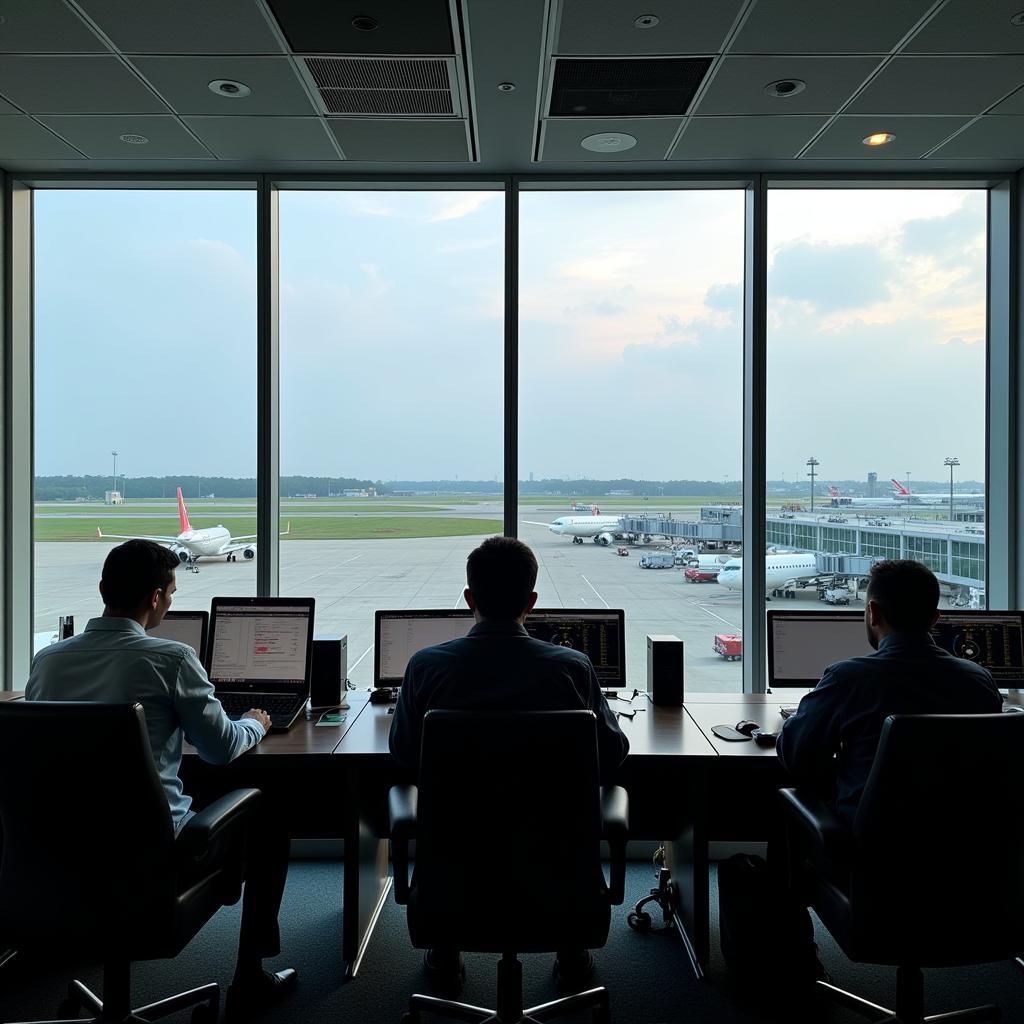Bangladesh’s burgeoning aviation sector revolves around its international airports, vital gateways connecting the nation to the world. These hubs facilitate trade, tourism, and cultural exchange, playing a crucial role in the country’s economic growth. This article delves into the intricacies of Bangladesh International Airport operations, infrastructure, and future developments.
The Importance of Bangladesh International Airport Infrastructure
A nation’s international airports are more than just transit points; they are symbols of progress and connectivity. They represent the nation on a global stage and contribute significantly to its economic prosperity. For Bangladesh, a country with a rapidly growing economy, investing in and developing modern airport infrastructure is essential. This investment not only strengthens the aviation sector but also promotes tourism and international trade. DAC Airport serves as a prime example of this crucial infrastructure.
Efficient airport operations are key to ensuring smooth passenger experiences and facilitating the seamless flow of goods. This involves streamlined check-in processes, baggage handling, and security measures. Modern technology plays a vital role in optimizing these processes, from automated check-in kiosks to advanced baggage tracking systems.
 Modern Terminal at Bangladesh International Airport
Modern Terminal at Bangladesh International Airport
Key Features of a Modern Bangladesh International Airport
A modern international airport must cater to the diverse needs of travelers and airlines. Key features include spacious terminals, multiple runways, and state-of-the-art air traffic control systems. These elements ensure efficient operations and enhance passenger comfort. Additionally, amenities such as duty-free shops, restaurants, and comfortable waiting areas contribute to a positive travel experience. Furthermore, accessibility for passengers with disabilities is a critical aspect of modern airport design.
Beyond passenger facilities, cargo handling capabilities are crucial for facilitating international trade. Dedicated cargo terminals, equipped with modern handling equipment, ensure the efficient processing and transportation of goods. This infrastructure supports businesses and contributes to economic growth.
 Air Traffic Control at Bangladesh International Airport
Air Traffic Control at Bangladesh International Airport
Future Developments and Expansion Plans
The aviation sector in Bangladesh is dynamic, with ongoing projects aimed at expanding and upgrading existing airports and constructing new ones. These initiatives are essential to meet the growing demand for air travel and cargo transportation. The 4th international airport in Bangladesh is a testament to this forward-thinking approach. These developments not only enhance connectivity within the country but also strengthen its links to the global community.
“The future of aviation in Bangladesh is bright,” states Dr. Ahsan Kabir, a leading aviation consultant. “Strategic investments in airport infrastructure are laying the groundwork for sustainable growth and increased global connectivity.”
Addressing Passenger Needs and Expectations
Meeting the evolving needs of passengers is paramount in the aviation industry. This includes providing convenient online booking platforms, personalized services, and efficient baggage handling. Furthermore, addressing passenger concerns about safety and security is essential for building trust and confidence. Airports must implement robust security measures while maintaining a smooth and efficient passenger flow. Rajshahi Airport is an example of an airport striving to meet these passenger expectations.
“Passenger satisfaction is our top priority,” says Ms. Farzana Rahman, Head of Customer Service at a prominent Bangladesh international airport. “We strive to create a seamless and enjoyable travel experience for all our passengers.”
Conclusion
Bangladesh international airport infrastructure plays a vital role in the nation’s economic growth and global connectivity. Ongoing investments and future developments are shaping a promising future for the aviation sector. By prioritizing passenger needs and embracing technological advancements, Bangladesh’s airports are poised to become leading hubs in the region. These airports are not merely points of arrival and departure but gateways to progress and opportunity.
FAQs
-
What is the main international airport in Bangladesh?
Hazrat Shahjalal International Airport (DAC) is the main international airport in Bangladesh. -
What are the future plans for Bangladesh international airports?
Future plans include expansion of existing airports and construction of new ones to meet the growing demand. -
How are Bangladesh airports improving passenger experience?
Airports are focusing on improving passenger experience through online booking, personalized services, and efficient baggage handling. -
What is the role of technology in Bangladesh airports?
Technology plays a crucial role in optimizing airport operations, including automated check-in and baggage tracking. -
How are Bangladesh airports addressing safety and security concerns?
Airports are implementing robust security measures while ensuring smooth passenger flow to address safety and security concerns. -
Are there any other regional airports in Bangladesh? Yes, LA Airport and Kamakhya Airport are some other notable airports in the region.
-
How do Bangladesh international airports contribute to the economy?
They facilitate trade, tourism, and create job opportunities, contributing significantly to the economy.
Contact Us
For any assistance, please contact us at Phone: +13089626264, Email: [email protected] or visit our address: 404 Bothwell St, Oxford, NE 68967, USA. We have a 24/7 customer service team.

